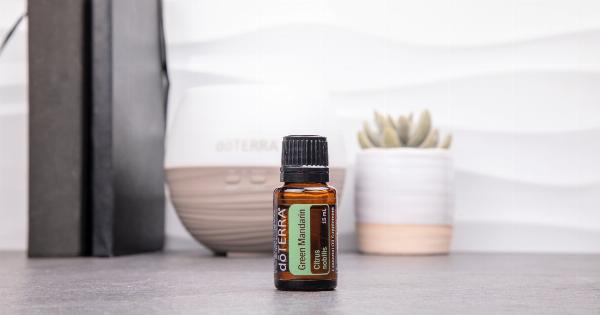Excessive sweating, clinically known as hyperhidrosis, can be a cause of frustration and embarrassment for many individuals.
Commonly referred to as “sweatheitis,” this condition can significantly impact a person’s quality of life and self-esteem. If you find yourself dealing with uncontrollable sweating, this article provides you with valuable insights on how to manage excessive sweating effectively.
What Is Sweathenitis?
Sweatheitis, or hyperhidrosis, is a medical condition characterized by excessive and uncontrollable sweating. It can affect various areas of the body, such as the underarms, palms, feet, and groin.
This condition occurs due to overactive sweat glands, leading to an increased production of sweat beyond what is necessary for temperature regulation.
Causes of Sweathenitis
While the exact cause of sweathenitis remains unknown, several factors may contribute to its development. These include:.
1. Genetic Predisposition: Sweathenitis often runs in families, suggesting a genetic component.
2. Hormonal Imbalances: Changes in hormone levels can trigger excessive sweating in some individuals.
3. Medical Conditions: Certain medical conditions, such as thyroid problems, diabetes, and menopause, can cause sweating to become disproportionately severe.
4. Environmental Factors: Hot weather, humidity, and stress can exacerbate sweating in individuals with sweathenitis.
5. Anxiety and Emotional Triggers: Nervousness, anxiety, and emotional stress can activate the sweat glands, leading to excessive sweating episodes.
Symptoms of Sweathenitis
The most common symptom of sweathenitis is excessive sweating that interferes with daily activities, even in cool or comfortable environments. Other signs and symptoms may include:.
1. Visible Sweat Stains: Perspiration marks on clothing, particularly in the armpit area.
2. Frequent Skin Infections: Moisture accumulation can create a breeding ground for bacteria and fungi, leading to skin infections like fungal overgrowth and folliculitis.
3. Social Anxiety and Embarrassment: Sweathenitis can significantly impact an individual’s self-esteem and social interactions, causing them to avoid certain social situations.
4. Emotional Distress: The constant worry about excessive sweating can lead to anxiety and stress.
5. Difficulty with Gripping Objects: Sweaty hands may make it challenging to hold onto objects securely.
Managing Sweathenitis
Although sweathenitis may not have a definitive cure, several management strategies can help individuals effectively cope with excessive sweating. Here are some approaches you can try:.
1. Prescription Antiperspirants
Prescription antiperspirants, containing aluminum chloride, can be more potent than over-the-counter options. Applying these antiperspirants to the affected areas can help reduce sweat production.
2. Medications
In some cases, doctors may prescribe medications, such as anticholinergics, to help regulate excessive sweating. These medications work by blocking the chemicals that stimulate sweat glands.
However, they may have potential side effects, so they should only be used under medical supervision.
3. Iontophoresis
Iontophoresis is a procedure that involves passing mild electric currents through water and onto the skin’s surface. This method is particularly effective for excessive sweating on the palms and feet.
The electric currents temporarily block the sweat glands, reducing sweat production.
4. Botox Injections
Botox injections can effectively reduce excessive sweating by blocking the nerve signals responsible for activating the sweat glands. This treatment is commonly used for excessive sweating in the underarms, palms, and feet.
However, the effects of Botox are temporary, and multiple injections may be required over time.
5. Lifestyle Modifications
Simple lifestyle changes can also make a significant difference in managing sweathenitis:.
– Choose breathable fabrics, such as cotton, to allow sweat evaporation. – Avoid spicy foods and hot beverages, as they can trigger sweating. – Keep cool by staying in air-conditioned environments whenever possible. – Practice stress-reducing techniques, like deep breathing exercises and meditation. – Use absorbent products, such as sweat pads or underarm shields, to prevent sweat stains on clothing. – Consider wearing loose-fitting clothes to allow better air circulation.
Surgical Treatment Options
In severe cases of sweathenitis that do not respond to other treatments, surgical interventions may be considered. These include:.
1. Sweat Gland Removal
In sweat gland removal surgery, also known as sweat gland excision, the surgeon removes some or all of the sweat glands in the affected area.
This procedure offers a more permanent solution but may lead to scarring or compensatory sweating in other areas of the body.
2. Sympathectomy
Sympathectomy is a surgical procedure that involves cutting or clamping the sympathetic nerves responsible for triggering sweat production. It is often reserved for severe cases of sweathenitis that do not respond to other treatments.
However, this procedure carries the risk of compensatory sweating in different regions of the body.
Seek Professional Help
If excessive sweating significantly affects your daily life, it is crucial to consult a healthcare professional. They can accurately diagnose the condition and recommend appropriate treatment options based on your specific situation.
Remember, you are not alone in dealing with sweathenitis, and there are effective management strategies available to help you regain control and improve your quality of life.






























